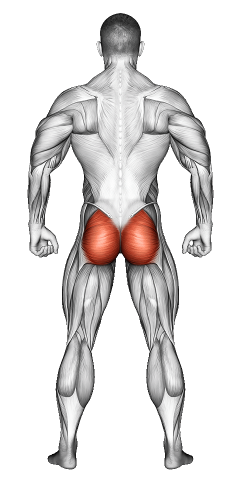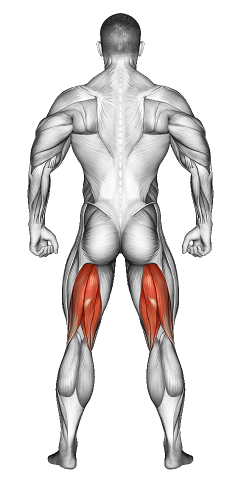Knee Hugs: Video Tutorial & Stretch Guide

Written By: Claude Michael
Updated: Dec 18, 2024
| Workout | Knee Hugs |
| Primary Muscle Group | Glutes |
| Secondary Muscle Group | Hamstrings |
| Equipment Required | Mat (optional) |
| Force Type | Bodyweight |
| Mechanics | Isolation |
| Exercise Type | Flexibility |
| Difficulty | Beginner |
Knee Hugs: Video Tutorial & Stretch Guide
Secondary Muscles Group
Knee Hugs: Step-by-Step Guide
- Step 1: Stand tall with your feet hip-width apart. Keep your core tight, shoulders relaxed, and eyes forward. This position helps you stay stable and ready to move.
- Step 2: Lift your right knee up toward your chest. Wrap both arms around your knee and gently pull it closer. Feel that stretch in your hip and lower back. Keep your other leg strong and steady. Don’t lean forward—stand tall.
- Step 3: Hold your knee at your chest for a few seconds. Breathe deeply and stay relaxed. This hold lets your muscles loosen up and deepen the stretch.
- Step 4: Lower your right leg back down with control. Focus on smooth movement as you bring your leg down. Avoid any sudden shifts or wobbles to stay balanced.
- Step 5: Now, lift your left knee. Hug, hold, and lower it with the same smooth motion. Keep your core engaged to stay stable.
- Step 6: Alternate sides, focusing on each movement. Take your time. Move with purpose, stretching to release tension and improve flexibility.
Knee Hugs: Overview
Knee Hugs focus on your hip flexors, glutes, and lower back. This exercise helps release tightness in these areas and prepares you for more intense stretches. Beginners find this move accessible and great for building flexibility. By adding this to your warm-up, you’ll feel looser and ready for your workout.
Knee Hugs: Benefits
Knee Hugs improve flexibility and release tension in your hips and lower back. This exercise reduces discomfort and boosts posture. With regular practice, you’ll improve lower-body flexibility, balance, and coordination, giving you a strong base for other exercises.
Knee Hugs: Pro Tips & Advanced Techniques
- Stay Balanced: Keep your core tight to hold your balance and avoid wobbling. This focus keeps each movement controlled.
- Slow It Down: Don’t rush. Hold each knee hug for a moment to deepen the stretch and fully release tightness.
- Add a Calf Raise: For an extra challenge, rise onto the toes of your standing leg as you hug each knee. This move improves your balance and adds a slight calf workout.
- Breathe Steadily: Inhale and exhale deeply, staying relaxed as you hold each hug. Breathe with control to stay focused on each stretch.
Knee Hugs: Progression Plan
Beginner
Intermediate
Advanced
Knee Hugs: Frequently Asked Questions (FAQs)
What muscles do Knee Hugs work?
+Knee Hugs focus on stretching the hip flexors, glutes, and lower back. This move loosens tight areas, improving flexibility and posture.
Can I add Knee Hugs to any workout?
+Yes! Use Knee Hugs as a gentle warm-up or cool-down stretch. This move works well in routines where flexibility and hip mobility are key.
Do Knee Hugs help with lower back pain?
+Yes, they can! Knee Hugs stretch tight hip flexors and glutes, which helps relieve lower back tension. But if you have back issues, check with a professional first.
Can Knee Hugs improve my posture?
+Definitely! Knee Hugs release tension in your hips and lower back, helping you stand taller and avoid slouching.
How often should I do Knee Hugs?
+Add Knee Hugs to your routine 2-3 times a week, especially on days you focus on lower body flexibility.
What mistakes should I avoid?
+Avoid rushing or pulling too hard on your knee. Move with control, keep your balance, and avoid twisting or leaning forward as you hug each knee.
Share
Don’t Wish for It, Work for It – Join the FlexXP Newsletter Today!
Thank you for signing up for the FlexXP Newsletter!
This site is protected and the Google Privacy Policy and Terms of Service apply.

